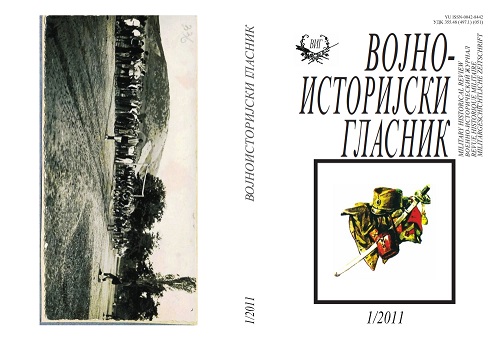Идеологија и политика уништења Срба у НДХ
Ideology and Policy of Destruction of the Serbs in the Independent State of Croatia (NDH)
Author(s): Milan KoljaninSubject(s): History of ideas, Military history, Political history, Nationalism Studies, Fascism, Nazism and WW II, Inter-Ethnic Relations
Published by: Institut za strategijska istraživanja
Keywords: Croatian Extreme Nationalism; Roman Catholic Church; Croatian Fascism; Ustasha; Independent State of Croatia; Serbs; Jews; Roma; the final solution of the Serbian question;
Summary/Abstract: Extreme Croatian nationalism was the basis for the ideological profiling of the Croatian fascism. The Roman Catholic Church also had the key role in this. The creation of a large Croatian Ustasha state after the aggression of axial forces on Yugoslavia enabled the achievement of a strategic goal of Croatian nationalism, and that was ethnic and mostly religious, homogeneous state by destroying the Serbian people. Even before the creation of the NDH, plans to destroy the Serbs had been made at the top of the Ustasha terrorist organization, and from April 1941, systematic implementation of the program of destruction began. Besides the largest target group of Serbs, like in the other states of the “new European order”, the program of destruction included Jews and Gypsies. The territories compactly inhabited by the Serbian people, as well as border areas to the mainstream of the Serbian people were primary targets of the destruction process. Shortly after the killing of the most vital part of the population, men, the entire Serb population was under attack, followed by the legalized looting of their property. After the start of the uprising of the Serbian people, military actions and operations against the rebels were used for the continuation of the process of destruction, and also for the even stronger homogenization of Croatian and Muslim population to participate in the destruction. After the start of the uprising of the Serbian people, military actions and operations against the rebels were used for the process of destruction, and also for the stronger homogenization of Croatian and Muslim population to participate in the destruction. Along with this, the system of concentration camps was established, where from the detainees were sent to the newly established death camps. The first such camp was in Gospić, being moved to Jasenovac in the second half of August 1941. Military operations against the rebels were still used for the continuation of the process of destruction which was particularly evident in the German-Croatian military operation in Kozara and Prosara in the summer of 1942. The last project of mass murder in the field was the action of Viktor Tomić in Srem in August-September of 1942. Although by the end of the war crimes against Serbs were still carried out during military operations, the process of destruction mainly continued in the Jasenovac death camp by the end of April 1945, when the Ustasha crew left the concentration camp and mostly destroyed it.
Journal: Vojnoistorijski glasnik
- Issue Year: 2011
- Issue No: 1
- Page Range: 66-91
- Page Count: 26
- Language: Serbian

